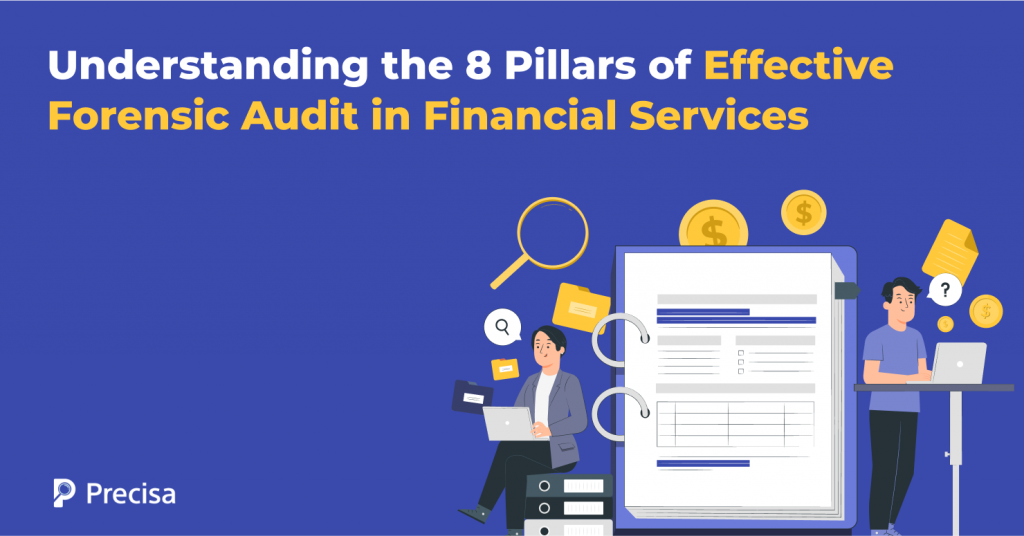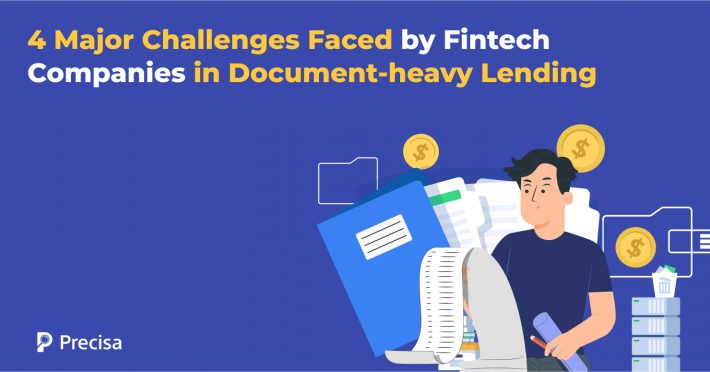Understanding the 8 Pillars of Effective Forensic Audit in Financial Services

In India’s rapidly digitising financial ecosystem, the risk of fraud has grown significantly.
A PWC report pointed out that nearly 59% of Indian organisations had been defrauded over the previous 24 months.
For financial institutions, early fraud identification is not merely a regulatory requirement but a business imperative. This is where forensic audits become critical.
These audits go beyond traditional checks, relying on technology, analytics, and behavioural profiling to trace financial irregularities to their roots.
Let us examine the key pillars that an effective forensic audit in the financial services sector must encompass.
What is a Forensic Audit?
A forensic audit is a specialised assessment of a company’s financial information to detect fraud, financial misconduct, or regulatory breaches.
It combines investigative accounting with legal and compliance expertise and often serves as a key piece of evidence in legal proceedings or regulatory inquiries.
Unlike routine audits that focus on financial accuracy, forensic audits look for intent, manipulation, and hidden risks—especially in loan books, borrower documentation, or fund flows.
For instance, forensic audits are frequently deployed by lenders before initiating recovery proceedings under IBC or in cases of suspected loan diversion, NPAs, or round-tripping.
The difference between a forensic audit and a regular audit.
8 Pillars of Effective Forensic Audit in Financial Services

Here are the essential pillars that constitute an effective forensic audit process:
1. Risk-Based Planning and Scoping
A well-executed forensic audit begins with understanding the institution’s specific risk landscape.
Rather than applying a one-size-fits-all approach, auditors must develop a risk-based audit plan that prioritises high-risk entities, borrowers, or business units.
This includes identifying red flags such as:
- Sudden spikes in unsecured loan approvals
- Borrowers with complex related-party structures
- Unusual repayment delays or early closures
Scoping makes sure time and resources are concentrated where the risk of fraud is highest.
2. Data Integrity and Digital Trail Preservation
In forensic audits, data is evidence. So, ensuring data integrity is non-negotiable. All digital trails—email logs, server records, transaction records, and loan disbursement paths—must be captured, preserved, and protected from tampering.
This entails:
- Maintaining audit logs for every digital transaction
- Ensuring backups are encrypted and stored off-site
- Using tamper-proof timestamping to validate timelines
Forward-thinking lenders can use Precisa’s Forensic Investigation, which provides structured data capture and secure storage, ensuring digital trails are dependable under audit and legal examination.
3. Advanced Transaction Analysis and Pattern Recognition
Once data is secured, the next step is to analyse it intelligently. Using machine learning and rule-based engines, auditors can detect anomalies that may not be evident in manual reviews.
Some actionable insights include:
- Unusual fund transfers just before loan default
- Circular transactions between borrower-linked entities
- High-value vendor payments with no matching deliveries
This analytical depth helps auditors connect the dots across accounts, hence uncovering fraud patterns that elude detection in traditional audits.
4. Regulatory Compliance Checks
Compliance is usually where financial misconduct first emerges. A robust forensic audit tests if the institution and its borrowers comply with:
- RBI’s KYC and AML guidelines
- Statutory tax payments (GST, TDS, Income Tax)
- FEMA and FCRA provisions in the case of foreign transactions
Recently, for example, PwC’s preliminary findings in IndusInd Bank indicated discrepancies with regard to accounting treatment for FX derivative loss and other disclosure items, leading to the initiation of a forensic audit.
5. Technology-Enabled Tools
Today’s complex fraud networks far surpass the capabilities of traditional manual audits. Modern forensic audits, however, use technology-enabled techniques to improve efficiency, speed, and accuracy.
These include:
- OCR-based document verification
- AI-powered transaction categorisation
- Automated bank statement analysis across 700+ formats
- API integration with third-party data sources like GST, MCA, and PAN databases
6. Cross-Verification with External Sources
Internal data must be validated by forensic assessments through triangulation with third-party sources. It can expose discrepancies that may not be detected internally.
Examples of third-party data validation include:
- Cross-referencing borrower revenue claims with GST filings
- Verifying ownership details via ROC/MCA records
- Mapping IP address locations with claimed business sites
A prevalent fraud identified through this method is shell companies being utilised to divert loan proceeds, revealed only through external MCA and tax data cross-matches.
7. Behavioural Risk Profiling and Psychometric Indicators
Beyond financials, behavioural analysis plays a key role in predicting fraud. By studying borrower communication, patterns of response, and psychological traits, auditors can flag potential intent to default or manipulate.
The main indicators include:
- Frequent revisions in disbursal requests
- Avoidance of face-to-face meetings or audits
- Aggressive push for fast approvals or waivers
Psychometric instruments are becoming more prominent in fraud risk models, particularly in unsecured retail and SME lending.
8. Customisable Audit Reporting
Finally, effective forensic audits must present their findings in a clear, defensible, and customisable format for internal committees, external auditors, or courts.
A good system should provide:
- A timeline-based narrative of suspicious activities
- Drill-down transaction views
- Exportable reports aligned with RBI or SEBI compliance formats
Granular audit trails and stakeholder-specific reporting minimise turnaround time from detection to escalation.
Key Takeaway
With the increasingly sophisticated evolution of financial frauds, lenders must move beyond reactive auditing to proactive forensic audit strategies.
As a cloud-based analytics platform, Precisa provides a full-stack Forensic Investigation Suite specifically designed for lending institutions. It offers:
- Automated Bank Statement Analysis: Processes statements from over 500 banks across 1,000+ formats
- Advanced Transaction Intelligence: Utilises AI to detect suspicious patterns, categorise payment modes, and identify anomalies such as circular transactions and shell company operations
- Smart Money Trail Detection: Tracks inter-bank transfers, maps money trails visually, and identifies counterparties
Contact Precisa today to safeguard your lending operations from financial crime.



